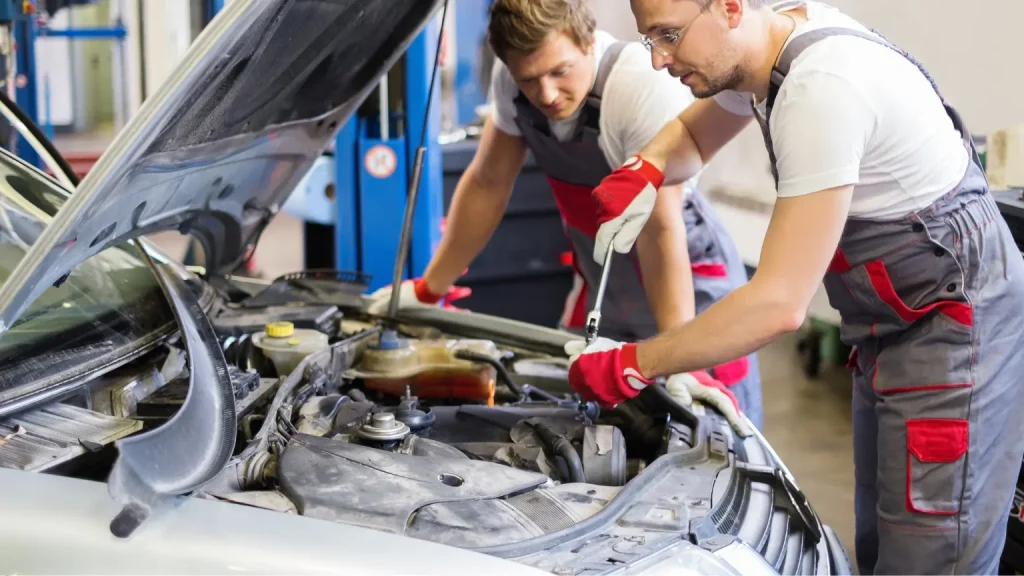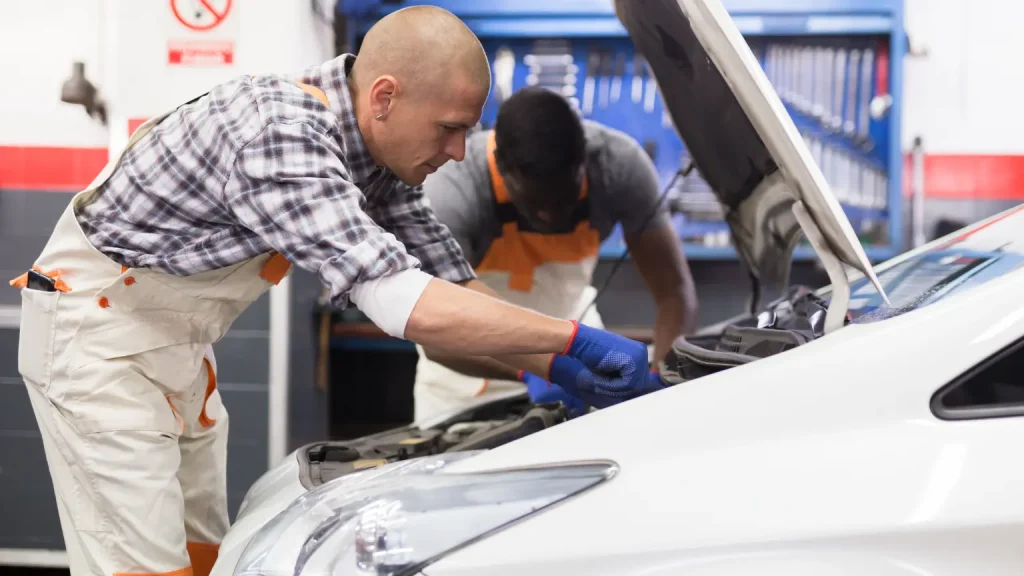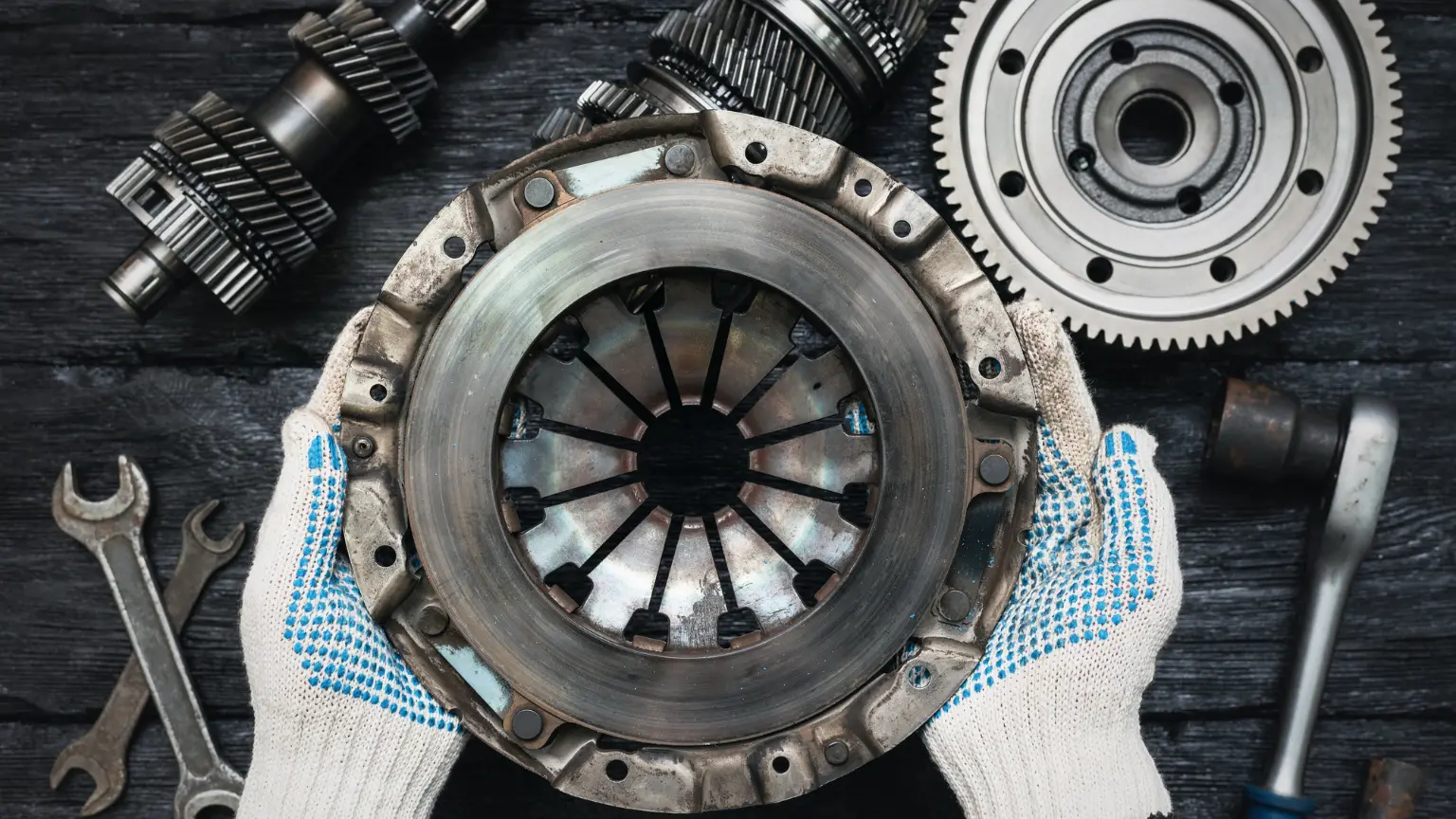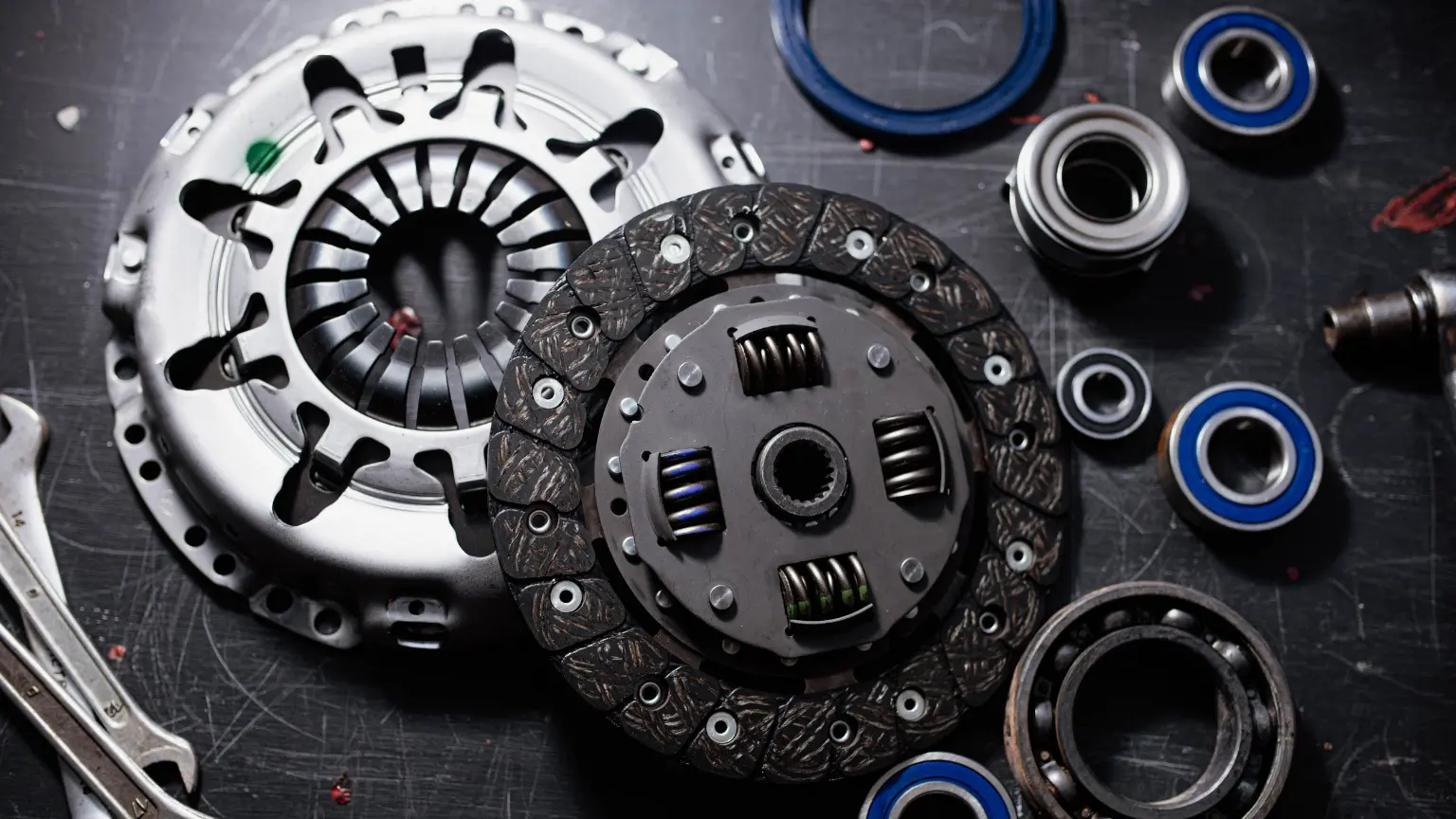Car Transmission Repair: Costs, Processes, & What to Expect
Learn the essentials of car transmission repair: from diagnostics and common issues to rebuild vs replacement, cost factors, repair shop selection, and maintenance tips.

Understanding car transmission repair is essential for anyone who owns a vehicle. The transmission is a crucial component that ensures your car runs smoothly by transferring power from the engine to the wheels. When transmission issues arise, they can affect your vehicle's entire operation, leading to potential breakdowns. Whether you’re dealing with minor problems or facing major repairs, knowing what to expect during the transmission repair process can help you make informed decisions and avoid unnecessary costs. In this guide, we'll explore the importance of the transmission, common issues, and what you need to know about repairing this vital part of your car.
Diagnosing Transmission Problems
Initial Diagnostic Assessment
When your vehicle exhibits issues that might involve the transmission, a thorough diagnostic assessment by a transmission specialist is critical. This initial check involves scanning the vehicle's computer system for error codes that can indicate specific transmission problems. Specialists use advanced diagnostic tools to interpret these codes and gain a deeper understanding of the underlying issues.

Signs Your Transmission Needs Repair
Common indicators include unusual noises like humming or clunking, difficulty in shifting gears, or a noticeable delay when shifting from 'Park' to 'Drive.' Additionally, if your car feels like it's struggling to accelerate or if there's noticeable transmission fluid leaking, these are clear signs that something is amiss. Identifying these symptoms early can lead to a quicker diagnostic process and repair, potentially saving you money and extending your vehicle’s lifespan.
Differentiating Between Minor and Major Transmission Issues
Understanding the difference between minor tweaks and major overhauls in transmission repair can significantly impact both the cost and approach to fixing your vehicle. Minor issues might include low fluid levels or minor leaks, which are generally less expensive to address. On the other hand, major issues such as gear malfunctions or damage to the transmission's internal components might require a rebuild or replacement. A skilled mechanic can assess the severity of the problem through diagnostic tests and a physical inspection of the transmission.
Tools and Techniques Used
The tools used in transmission diagnostics play a crucial role in accurately identifying problems. A range of equipment is utilized, from basic hand tools to sophisticated computer scanners that interface directly with a car’s on-board computer. These tools read and clear the error codes that signal transmission issues. Hydraulic lifters may be used to inspect the car's undercarriage for physical damage or leaks.
The Transmission Repair Process
The different solutions for transmission issues, such as repairing, rebuilding, or replacing the transmission, and the factors that determine which option is appropriate.
Transmission Rebuild
A rebuild involves a complete overhaul of the transmission's internal components. This process involves the mechanic disassembling the entire transmission, cleaning all the parts, and replacing those that are damaged or worn out with new ones. It's a labor-intensive process that requires expertise in transmission systems to ensure every component is reassembled correctly. The advantage of a rebuild is that it often costs less than a full transmission replacement and can significantly extend the life of your vehicle.
Transmission Replacement
Sometimes, the damage is too extensive, making repairs impractical. In these cases, replacement becomes necessary. The process of choosing and installing a replacement transmission includes selection criteria and what is involved during installation. This involves installing a new or refurbished transmission, ensuring all parts function properly. Replacement is typically more expensive than repairing or rebuilding, but it might be warranted if the existing one is beyond repair. Choosing this option ensures that your car has a reliable transmission, potentially with a new warranty, providing peace of mind regarding future transmission performance.
Timeframe for Completing Transmission Repairs
The time required to complete auto transmission repair can vary significantly depending on the complexity of the problem and the type of repair being done. Simple repairs, such as replacing a sensor or seal, might be completed in a few hours, while a complete rebuild can take several days. The timeframe also depends on the availability of parts and the mechanic's schedule. Clear communication with transmission repair shops will help set realistic expectations for how long your car will be out of commission.
Costs of Transmission Repair
The expected duration and costs associated with transmission repairs, rebuilds, or replacements.
Factors Influencing Transmission Repair Costs
Several factors can influence the cost of repairing a car's transmission. Understanding these variables can help car owners prepare and budget for potential repairs effectively:
- Type of Transmission: Automatic transmissions are typically more complex, leading to higher repair costs than manual transmissions. Automatic systems feature more intricate components and electronic systems, which require specialized knowledge and tools to diagnose and fix, driving up the repair bills.
- The Extent of Damage: The severity of the damage significantly affects the cost. Simple issues like fluid leaks can often be resolved with minor repairs at a lower cost. However, substantial damage may require a complete transmission rebuild or even a full replacement, which involves extensive labor and part costs, thereby escalating the overall expense dramatically.
- Labor Costs: The cost of labor for a transmission rebuild can vary widely depending on the mechanic’s expertise and the service location. Specialists in transmission repair typically charge more due to their advanced skills and the precision required in such tasks. Labor rates in urban areas are generally higher than in rural areas, reflecting the economic conditions of each region.
- Parts and Materials: The use of high-quality replacement parts and specialized fluids is crucial for maintaining the performance and longevity of the transmission. However, these parts and materials can be expensive, particularly for high-end or older models that require specific components that may not be readily available.
- Warranty Coverage: Warranty conditions play a critical role in determining the cost of repairs. If the transmission or its components are still under warranty, the repair costs can be substantially reduced as parts, and sometimes labor, are covered. On the other hand, repairs for out-of-warranty parts can lead to significantly higher expenses, depending on the nature of the problem and the parts needed.
These factors collectively influence the total cost of transmission repair, making it essential for vehicle owners to understand and anticipate the potential expenses involved. Proper maintenance and timely servicing can mitigate severe damage, potentially saving substantial amounts in repair costs.
Hidden Costs to Consider
When budgeting for transmission repair, it's important to account for potential hidden costs that can arise. These can include towing charges if your vehicle cannot be driven to the shop, which could arise from a completely non-functional transmission or related safety issues that make driving risky. If the repairs are extensive and require several days to complete, you might need to rent a vehicle to maintain your daily routines without interruption. Also, during the repair process, mechanics may discover other underlying issues that were not apparent during the initial inspection. Ensuring that you have a comprehensive quote from your transmission shop that outlines all foreseeable expenses can help avoid surprises and ensure that you are financially prepared for the full scope of the repair work.

Choosing a Transmission Repair Shop
Importance of a Certified Transmission Specialist
Entrusting your vehicle to a certified transmission specialist is crucial for several reasons, ensuring that your car receives the best possible care. Certification from a reputable organization not only verifies a mechanic’s expertise but also signifies a commitment to maintaining current knowledge of advanced transmission technology and repair techniques. Here are some key benefits of choosing a certified specialist:
- Expert Knowledge: Certified transmission mechanics benefit from comprehensive training programs and are often required to participate in ongoing education to keep their certification current. Continuous learning ensures they are equipped with the latest knowledge of rapidly evolving transmission technologies, enabling them to diagnose issues with precision and implement the most effective solutions.
- Quality of Work: Specialists who achieve certification must demonstrate adherence to stringent industry standards. This commitment to excellence generally translates into superior repair work, as certified technicians use proven techniques and processes that meet or exceed original equipment manufacturer (OEM) specifications.
- Access to the Right Tools and Equipment: As mentioned previously, effective transmission repair and maintenance require specific tools and diagnostic equipment. Certified specialists typically have access to the latest, most advanced equipment, enabling them to perform complex repairs with greater accuracy and efficiency.
- Trust and Reliability: Certification is a mark of reliability that instills confidence in vehicle owners. Knowing that a professional with a verified skill set is taking care of your car's transmission can alleviate stress and ensure that the repair is done the first time correctly, avoiding costly repeat issues.
By opting for a certified expert, you ensure that your vehicle benefits from the highest standards of care, backed by up-to-date technical knowledge and a commitment to quality. This choice not only protects your vehicle but also enhances its longevity and reliability, making it a wise decision for any car owner.
Evaluating the Reputation of Repair Shops
A thorough assessment begins with researching online reviews and customer testimonials. These firsthand accounts offer valuable insights into others' experiences with the shop, shedding light on aspects such as repair quality, staff professionalism, and customer satisfaction. Pay close attention to recurring themes in these reviews, as they can indicate consistent strengths or weaknesses. For instance, if multiple reviewers praise the shop for its transparent pricing but criticize its repair timeliness, this pattern can inform your expectations and decision-making process.
Seeking referrals from trusted sources can be invaluable. Friends, family, or colleagues who have had transmission work done can provide candid insights based on their personal experiences. These referrals can often be more reliable than anonymous online reviews, as they come from people whose opinions you trust. When discussing their experiences, ask about specific aspects of the service. This information can help you estimate whether the shop consistently meets customer expectations. Furthermore, you might want to visit the shop in person before making a decision. Observing the facility's cleanliness, workspace organization, and staff professionalism can provide additional clues about the shop's commitment to quality service.
Lastly, it’s crucial to verify if the shop has any outstanding complaints with consumer advocacy organizations such as the Better Business Bureau (BBB). The BBB and similar organizations maintain records of complaints filed against businesses, along with information on how these complaints were resolved. A reputable repair shop should have a clean or well-managed record with minimal unresolved issues.
Independent Shops vs. Dealership Services
Independent shops often offer more personalized service and may have more flexibility in pricing and turnaround times. They may also possess specialized expertise in certain types of vehicles or transmissions. On the other hand, dealerships might have better access to proprietary tools and genuine parts, which can be crucial for newer or warranty-covered vehicles. Weighing the pros and cons of each can help you make the best choice for your situation and needs.
What to Expect During Transmission Service
How to Communicate Effectively with Your Mechanic
Be clear about the symptoms your vehicle is experiencing and any recent changes or repairs. This information can help the mechanic diagnose the issue more accurately. Don't hesitate to ask questions about the repair process, transmission replacement costs, or any terms you don’t understand. A good mechanic will appreciate your engagement and respond with detailed explanations, ensuring that you are fully informed throughout the process.

Post-Service Expectations and Care
After your transmission work is completed, expect your vehicle to shift smoothly and operate more reliably, but proper care is essential to protect your investment. Follow the shop’s recommendations for a short break-in period, avoiding heavy loads or aggressive driving for the first few hundred miles. Regularly check for leaks and monitor shifting behavior. Any unusual noises or hesitation should be reported promptly. Schedule periodic transmission fluid changes and follow up with recommended inspections to catch minor issues early. By practicing these habits, you’ll maximize transmission lifespan, maintain optimal performance, and reduce the likelihood of costly repairs in the future.
Maintaining a healthy transmission isn’t just about addressing problems as they arise; it involves a proactive approach to vehicle care. Regular maintenance, such as fluid changes and periodic inspections by qualified specialists, can prevent many common transmission problems from developing. Being proactive also means communicating effectively with your mechanic and understanding the processes your vehicle undergoes during repair. Protect your vehicle’s performance and get expert, reliable transmission service from Trans Medic Transmissions by scheduling an appointment. By following these car transmission repair steps, you ensure your transmission remains in good working order, extending your vehicle's overall health and efficiency.
Follow a maintenance program
Ante gravida id aenean quis egestas risus nam amet nullam leo diam diam aliquam eu eu malesuada arcu rhoncus suspendisse nulla mattis ut amet sagittis in justo egestas.

search for a trusted mechanic
Lorem ipsum dolor sit amet, consectetur adipiscing elit lobortis arcu enim urna adipiscing praesent velit viverra sit semper lorem eu cursus vel hendrerit elementum morbi curabitur etiam nibh justo, lorem aliquet donec sed sit mi dignissim at ante massa mattis.
- Neque sodales ut etiam sit amet nisl purus non tellus orci ac auctor
- Adipiscing elit ut aliquam purus sit amet viverra suspendisse potent
- Mauris commodo quis imperdiet massa tincidunt nunc pulvinar
- Excepteur sint occaecat cupidatat non proident sunt in culpa qui officia
Check the air pressure in your tires
Vitae congue eu consequat ac felis placerat vestibulum lectus mauris ultrices cursus sit amet dictum sit amet justo donec enim diam porttitor lacus luctus accumsan tortor posuere praesent tristique magna sit amet purus gravida quis blandit turpis.
Review your suspension frequently
At risus viverra adipiscing at in tellus integer feugiat nisl pretium fusce id velit ut tortor sagittis orci a scelerisque purus semper eget at lectus urna duis convallis. porta nibh venenatis cras sed felis eget neque laoreet suspendisse interdum consectetur libero id faucibus nisl donec pretium vulputate sapien nec sagittis aliquam nunc lobortis mattis aliquam faucibus purus in.
- Neque sodales ut etiam sit amet nisl purus non tellus orci ac auctor
- Adipiscing elit ut aliquam purus sit amet viverra suspendisse potent
- Mauris commodo quis imperdiet massa tincidunt nunc pulvinar
- Excepteur sint occaecat cupidatat non proident sunt in culpa qui officia
Service your vehicle as regularly as posible
At risus viverra adipiscing at in tellus integer feugiat nisl pretium fusce id velit ut tortor sagittis orci a scelerisque purus semper eget at lectus urna duis convallis. porta nibh venenatis cras sed felis eget neque laoreet suspendisse interdum consectetur libero id faucibus nisl donec pretium vulputate sapien nec sagittis aliquam nunc lobortis mattis aliquam faucibus purus in.
“Nisi quis eleifend quam adipiscing vitae aliquet bibendum enim facilisis gravida neque velit euismod in pellentesque”
Conclusion
Eget lorem dolor sed viverra ipsum nunc aliquet bibendum felis donec et odio pellentesque diam volutpat commodo sed egestas aliquam sem fringilla ut morbi tincidunt augue interdum velit euismod eu tincidunt tortor aliquam nulla facilisi aenean sed adipiscing diam donec adipiscing ut lectus arcu bibendum at varius vel pharetra nibh venenatis cras sed felis eget.


